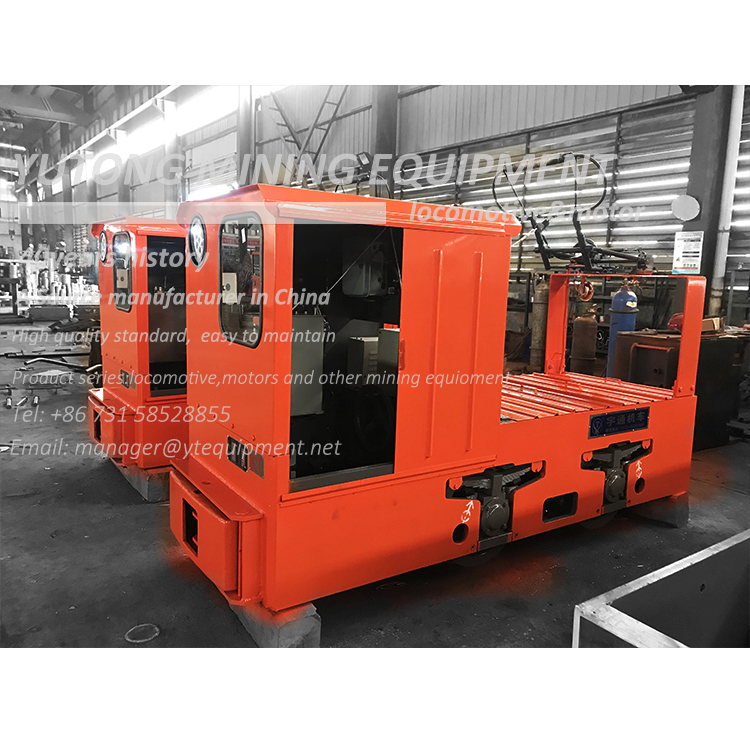Battery Locomotive/Wired Lcomotive Electrical Fault Problem
Date:2021-08-04
In the process of starting and running, the battery locomotive, the wired locomotive will have some faults. What are the faults that will occur, and what is the solution?
First, the failure occurred during startup
1. After the controller is closed, the battery locomotive/wire locomotive does not walk.
Cause: A contact of the commutating part is in poor contact with the copper piece, and the connecting wire is short-circuited.
Solution: Adjust the contacts and copper segments to make them in good contact. Repair and replace the connecting wires to avoid disconnection of the connecting wires.
2. After the controller is closed, the locomotive does not walk.
Reason: Some parts of the electric circuit are short-circuited, usually the following six parts are short-circuited, the pantograph and the automatic switch are short-circuited, the controller is short-circuited, the starting resistance is short-circuited, the traction motor is short-circuited internally, and the locomotive main circuit grounding line is short-circuited.
Solution: Eliminate short circuits in some parts of the electrical circuit and repair them.
3. The automatic switch trips after the locomotive controller is closed.
Cause: It is mainly caused by the current generated by grounding in some parts of the electrical circuit. There are the following four places, the controller cam contactor contacts are grounded, the controller reversing contactor contacts are grounded, the starting resistor is grounded, and the internal line of the traction motor is grounded.
Solution: Deal with the above faults and repair the automatic switch trip caused by overcurrent generated by the grounding of the electric line.
4. The running direction of the locomotive is opposite to the direction indicated by the direction of the reversing handle
Reason: The traction motor excitation winding is connected to the positive and negative power lines; the commutation winding is connected to the positive and negative power lines.
Solution: Adjust the operation mode and direction to ensure consistency.
5. The starting speed of the locomotive controller is too fast after closing.
Cause: Short-circuit of the starting resistor, short circuit of the traction motor coil.
Solution: Eliminate the short-circuit fault of the starting resistor and check the short-circuit of the coil generated in the excitation winding of the outgoing traction motor.
Second, the failure occurred during operation
1. When the controller handle is switched from low to high, the speed of the locomotive does not change much or decreases.
Treatment method: close the closed contact in the controller, and disconnect the starting resistor that should be disconnected in the controller to avoid single motor operation in series or parallel operation.
2. Locomotive automatic switch suddenly trips
Treatment method: Excluding or replacing the automatic switch, controlling the surface of the commutator of the traction motor is too large, and the arc is short-circuited with the traction motor casing to avoid the temperature rise of the traction motor is too high, and the insulation of the motor conductor is damaged to cause short circuit or grounding.
3. When the handle of the locomotive controller changes from low to high, the contacts show sparks.
Treatment method: replace the arc-extinguishing device that fails on the static contact, replace the short-circuited contact arc-extinguishing coil, replace the damaged arc-extinguishing hood, keep the action of closing and disconnecting each contact consistent, strengthen the driver's operation level and reduce the load.
4. The locomotive control handle is stuck or the locking device is out of order.
Treatment method: Refuel or replace the controller shaft bearing to avoid the operation handle being clamped. Replace the positioning spring.
5. The sudden absence of voltage during the running of the electric locomotive causes the speed of the overhead electric locomotive to drop and stop.
Treatment method: Dealing with the local grounding of the pantograph, restoring the power supply of the traction network, and repairing the power circuit of the electrical system of the overhead electric locomotive. Replace the contacts with poor contact in the repair control and repair the starting resistor circuit.
Third, the failure occurred during braking
1. Small braking torque
Treatment method: mainly because the braking resistor can not be short-circuited, it should handle the problem that it can not be short-circuited.
2. No braking torque.
Treatment method: Ensure that the two motors can travel parallel to the circuit in the brake circuit. Repair the controller main contacts.
3. There is no braking torque in the direction of single direction operation.

